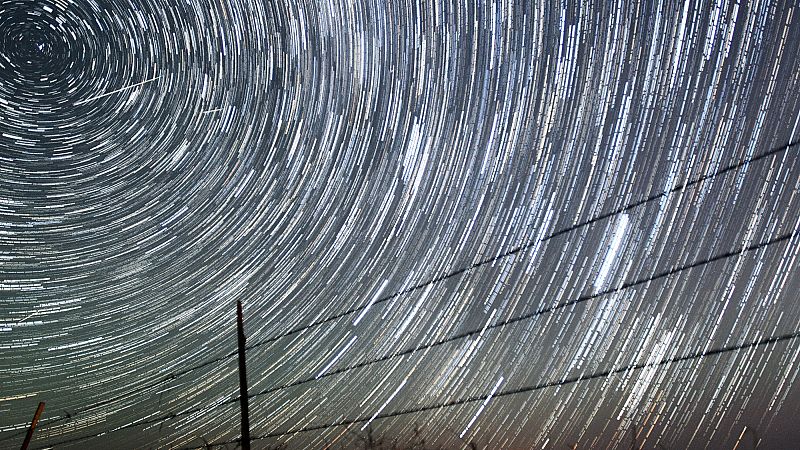
Of all the meteor showers that grace our calendar, none is as beloved or as reliable as the Perseids. However, 2025 presents a particular challenge.
It will not be not so much a year for the casual observer, but a rewarding opportunity for the dedicated enthusiast. The reason is a formidable celestial adversary: a bright Moon that will dominate the sky during peak nights, threatening to overshadow the show.
This article is intended as the definitive handbook for overcoming this challenge - and much more: we will unveil the cosmic origin of the Perseids, provide the keys to planning Perseid observing in 2025, and offer practical tips and detailed geographical guides for observers in Europe and Latin America.
The aim is to transform a potentially disappointing year into a successful and memorable star hunt, demonstrating that even under a moonlit sky, the magic of the "Tears of Saint Lawrence" can be captured by those who know how to and where to look.
The cosmic origin of the 'Tears of St. Lawrence'
The annual spectacle of the Perseids, despite their ethereal and romantic appearance, has a prosaic but fascinating origin: they are, in essence, the remains of a giant comet orbiting our Sun. Understanding their provenance not only enriches the viewing experience, but also reveals a profound duality in the nature of the cosmos, where ephemeral beauty and latent danger often share the same source.
The celestial body responsible for the Perseid meteor shower is comet 109P/Swift-Tuttle. Discovered independently by Lewis Swift and Horace Tuttle in 1862, it is a colossal object, with a nucleus approximately 26 kilometres in diameter, making it the largest known object to periodically cross the Earth's orbit. It completes one lap around the Sun every 133 years, in a highly elongated orbit that takes it from beyond Pluto to the interior of the Solar System.
Each time Swift-Tuttle approaches the Sun, the heat causes its surface ices to sublimate, i.e. go directly from solid to gaseous. This process releases an enormous amount of dust and rock particles, which are scattered along its orbital path, forming a vast stream of debris. What we see as Perseids are nothing more than these small fragments, mostly the size of a grain of sand, which constitute the "debris" left behind by the comet on its countless journeys.
From comet dust to celestial spectacle
Every year during July and August, the Earth, on its orbital journey around the Sun, passes through this dense stream of particles left behind by the Swift-Tuttle comet. When these fragments, called meteoroids, enter the Earth's atmosphere at speeds of up to 59 km/s, friction with the air heats them to thousands of degrees Celsius. This extreme heat vaporises the particle and the surrounding air, creating a bright, fleeting streak of light that we know as a meteor or, popularly, a "shooting star".
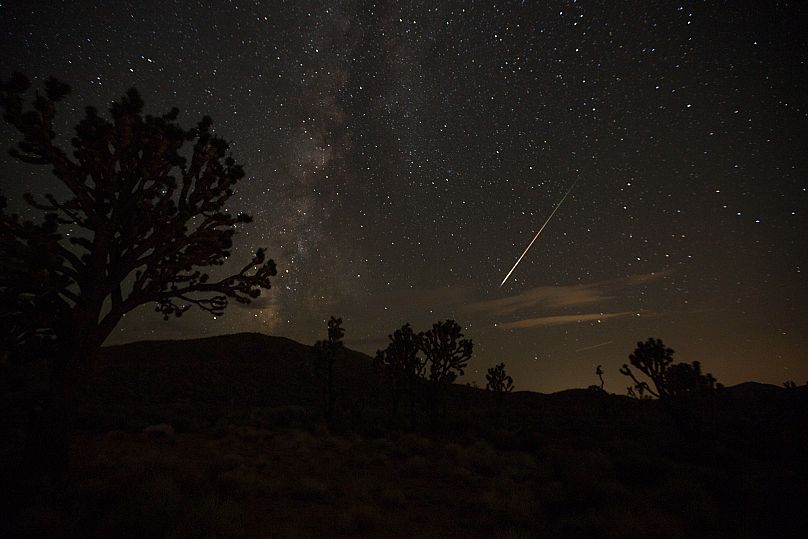
Most of these meteors disintegrate completely at altitudes between 80 and 100 kilometres above the Earth's surface. It is important to distinguish the terminology: a meteoroid is the particle in space, a meteor is the luminous phenomenon in the atmosphere, and a meteorite is a fragment that survives atmospheric ablation and reaches the ground, which is extremely rare in the case of the Perseids due to the small size of its particles.
The Perseid shower gets its name because its radiant is located in the constellation Perseus. To be precise, modern astronomers place the radiant in a border region between the constellations Perseus, Cassiopeia and Camelopardalis.
History and mythology: From Chinese to Christian martyrs
The observation of the Perseids is not a modern phenomenon. The oldest surviving records come from Chinese historical annals from 36 AD, which mention a peak of meteors at this time.
However, it was not until 1835 that the Belgian astronomer Adolphe Quetelet scientifically proved that it was a cyclical meteor shower occurring every August, with its radiant at Perseus.
In European popular culture, the Perseids are better known as the "Tears of St. Lawrence". This name comes from the coincidence of the peak of the star shower with the feast of Saint Lawrence, a Christian martyr who, according to tradition, was burned at the stake in Rome on 10 August 258.
During the Middle Ages and the Renaissance, popular tradition associated the meteors that streaked across the sky on these nights with the tears of fire that the saint shed during his martyrdom, thus merging an astronomical phenomenon with a profound cultural and religious narrative.
Planning your Observing: The Perseids in 2025
The period of Perseid activity in 2025 runs from 17 July to 24 August. During this window of more than a month, the Earth passes through the debris stream of comet Swift-Tuttle, which means that it is possible to see meteors from this shower on any night within this interval.
The night of maximum activity, known as the "peak", is scheduled for 12-13 August 2025. The time of highest intensity is expected around 02:38 UTC on 13 August. This translates to 04:38 CEST and late on the night of 12 August for most of Latin America.
The critical factor that will define the 2025 experience is the phase of the moon. During the peak night, the Moon will be in the waning gibbous phase, with 83% illumination. This intense lunar light will act as a form of natural light pollution, creating a bright veil in the sky that will obscure all but the brightest meteors.
For this reason, 2025 is listed as a year with "poor" or "challenging" conditions for Perseid observing. It is essential to correct the misinformation suggesting that a waning moon is beneficial; at 83% illumination, its brightness is a significant impediment.
Managing expectations - less than 100 stars per hour visible
To quantify the intensity of a meteor shower, astronomers use the Zenithal Hourly Rate (THZ). This value represents the theoretical number of meteors that an observer could see in one hour under absolutely perfect conditions: a completely dark sky (no moon and no light pollution) and with the radiant of the shower located directly at the zenith (the highest point in the sky). For the Perseids, the THZ is usually around 100-150 meteors per hour.
It is crucial to understand that the THZ is a theoretical ideal, not a prediction of what will be seen in practice. In 2025, the actual number of observable meteors will be drastically lower than 100 per hour due to the light of the Moon. Expectations must be adjusted accordingly. Instead of a steady stream of meteors, this year's observation will focus on quality over quantity.
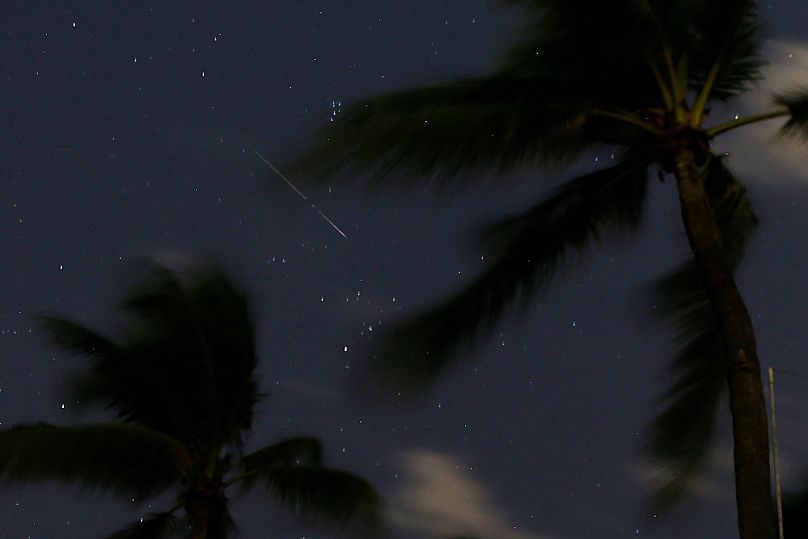
The Perseids are famous for producing "fireballs", which are exceptionally bright and spectacular meteors, capable of rivalling the planet Venus in brightness and even casting shadows. These fireballs will be the real stars of 2025, as their brightness will allow them to pierce the lunar veil. Patience will be rewarded not with many meteors, but with the chance to witness some of these truly memorable events.
The shooting star hunter's kit
To enjoy a long night of observing, comfort and preparation are key. Sophisticated optical equipment is not necessary; in fact, telescopes and binoculars are counterproductive for viewing meteor showers, as their field of view is too narrow. The best instrument is the human eye. Essential equipment includes:
For comfort, a reclining chair, lounger, mat or simple blanket is essential to be able to look up for long periods without straining the neck. An expert tip is to keep the head slightly elevated to avoid the drowsiness that can result from lying completely flat.
Warm clothing: Even on summer nights, temperatures can drop considerably in the early hours of the morning. It is essential to wear warm clothing in layers to adapt to temperature changes.
Lighting: A torch with a red light filter is a non-negotiable item. Red light allows you to orient yourself in the dark without ruining your eyes' adaptation to the night, a process that can take up to 30 minutes and is crucial for seeing the faintest meteors. The use of red light is also a courtesy rule in observing groups, as the white light from a phone or a normal torch can ruin the night vision of everyone present.
Provisions: A thermos with a hot drink, water and some snacks will help maintain energy and comfort during the vigil.
Orientation: A mobile phone with an astronomy app (such as Sky Tonight, Star Walk 2 or Stellarium) in "night mode" (with the screen in shades of red) is very useful for locating the constellation Perseus and other celestial landmarks.
Geographical guide to observing the Perseids 2025 in Europe
Stargazing in Europe presents a picture of contrasts. It is a densely populated continent where light pollution is a serious problem, but at the same time it is home to a growing network of protected "islands of darkness" that offer spectacular skies to those willing to look for them.
As a basic rule, this year in particular, it will be necessary to stay even further away from urban centres and areas of light pollution as the moon is not helping as it is in such an advanced phase and illuminates 83% of the sky.
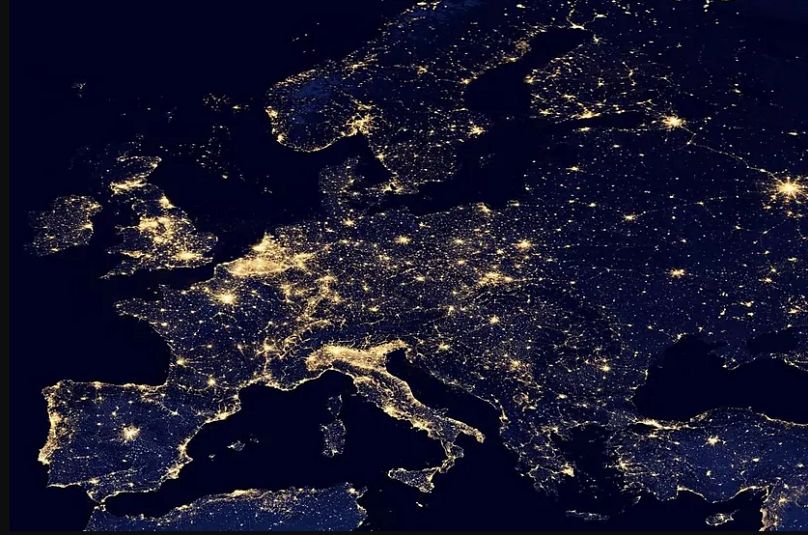
Dark havens: European parks and reserves
The International Dark-Sky Association (IDA) is a global organisation that certifies sites with exceptional quality night skies, creating a trusted network for amateur astronomers. Europe has many certified sites that are ideal for observing the Perseids.
The United Kingdom is one of Europe's leaders in dark skies. The Northumberland International Dark Sky Park, which holds Gold-Tier status for the pristine quality of its sky, is a particular highlight. In addition, national parks such as Brecon Beacons and Snowdonia in Wales, and Exmoor and Yorkshire Dales in England, are certified as Dark Sky Reserves.
Germany offers two main destinations. The Eifel National Park, surprisingly accessible from major cities such as Cologne, was the country's first certified park. Further south, the Bavarian Forest National Park forms a large transboundary dark sky reserve.
In Hungary, there are two notable parks: Hortobágy National Park, a vast plain with open skies, and Zselic Starry Sky Park, which has an observatory and planetarium for visitors.
In France, the Cévennes National Park and the Pic du Midi de Bigorre observatory in the Pyrenees are top astro-tourism destinations.
Greece: The island of Kefalonia is home to Mount Ainos National Park, the country's first "International Dark Sky Park". Other excellent sites include Mount Olympus National Park and remote areas of the island of Crete.
Portugal is home to the Alqueva Dark Sky Reserve in the Alentejo region. It was the first destination in the world to be certified as a "Starlight Tourist Destination". The areas around the large Alqueva lake, such as Monsaraz, are among the best on the continent for astronomy.
In Poland, the darkest region is in the Bieszczady Mountains in the southeast, where the Bieszczady Starry Sky Park is located. It is part of a transborder reserve with Slovakia and Ukraine.
Spain has positioned itself as a world power in astro-tourism, not only because of the quality of its skies in many regions, but also because of a proactive and structured approach to protecting and promoting this heritage.
The Starlight Foundation, based in the Canary Islands, is leading this initiative, certifying destinations that not only have dark skies, but also integrate astronomy into a complete tourism offer.
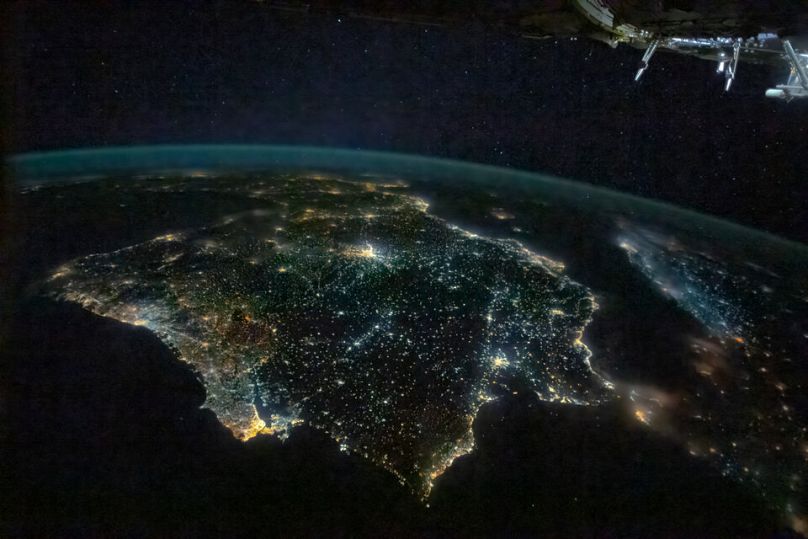
The Starlight certification guarantees a high quality sky and a tourist infrastructure prepared for astronomical visitors. To observe the Perseids, these are some of the best destinations in Spain:
Aragon: The province of Teruel is a paradise for astronomers. The Sierra de Albarracín and the Gúdar-Javalambre region are Starlight Tourist Destinations recognised for their exceptionally dark and clear skies, and are home to important astronomical observation facilities.
Castilla-La Mancha and Castilla y León: The Serranía de Cuenca is certified as a Starlight Destination and has an astronomical park dedicated to astronomy outreach.
Sierra de Gredos is a Starlight Reserve offering mountainous skies of great purity.
Extremadura and Andalusia: Extremadura stands out for places such as the Gabriel y Galán reservoir and the Los Calicantos site in Badajoz, which combines its dark skies with an inland blue flag beach.
Sierra Sur de Sevilla (with Starlight municipalities such as Pruna and El Saucejo) and Capileira, in the Alpujarra of Granada at an altitude of over 1,400 metres, are privileged enclaves.
Canary Islands: Considered among the best places on the planet for astronomy, the islands of Tenerife and La Palma are Starlight Reserves. They are home to first-class professional observatories and offer skies of unequalled transparency and stability.
Community of Madrid: The best recommendation for Madrid is to travel to the mountains or neighbouring provinces due to the high light pollution caused by the moon. Silla de Felipe II in El Escorial or the Sierra de Guadarrama, La Pedriza or Los Molinos.
Other Notable Destinations: The network extends across the continent, including Øvre Pasvik National Park in Norway, the island of Mandø in Denmark, and the cross-border regions of Jizera and Šumava between Poland and the Czech Republic.







